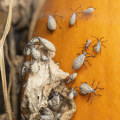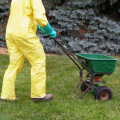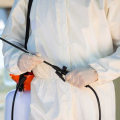Apply it to the lawn and around the foundation of the house in early spring or summer to avoid infestation. Otherwise, apply it at the first sign of insect damage or activity. Applications can be made on ornamental plants, flowers and orchards just before planting or when plants emerge. Don't make requests in the rain.
When you have a lawn that is a haven for insects, such as red ants, you should apply the granules at the end of each winter. Granules, rather than dust, are preferred for good reason; larger chemical pieces break down slowly for effective insect control over a period of a few months, depending on the strength of the chemical concentration. During the warmer months of spring and summer, granules continue to control the insect population when applied before a major infestation occurs. Preventive products are the most effective.
Products containing imidacloprid, thiamethoxam, clothianidin, or chlorantraniloprole will not control larvae in spring. They are preventive products that work very well on newborn larvae present in July, but do not work well for large larvae found from September to May. There are different recommended application times depending on the active ingredient. Although the bag often says it is applied anytime from May to August, if applied in early spring, the pesticide can move through the soil or partially degrade by the time the larvae hatch in late July.
If applied too late, preventive products may not be effective, since they work best on small larvae. Part of the various lawn insect control strategies that need to be adopted include removing standing water and weeds and spraying lawns and other possible nesting areas. Before implementing your preferred insect control measures on lawns, you need to identify the problems. I went to several of the local lawn and garden centers in the Lansing, Michigan area to see what types of products are available that specifically claim will work to control larvae.
If lawn cycling is practiced (leaving grass clippings on the lawn after mowing, rather than removing them), the lowest rate of nitrogen application can be used. These products are used to prevent future food problems, not to control larvae present on lawns in spring. For more help with insect control for your lawn, visit Jonathan Green online or stop by your local independent home and garden retailer to help you identify which insect control products will work best in your garden and when to apply them. Before taking any insect control measures, make sure that the insects are causing the damage and not something else and that the insect pest is present at stages of life susceptible to control actions.
Some biological pesticides containing living organisms, such as entomopathogenic nematodes or biological metabolites of Bacillus thuringiensis (Bt) and other organisms, are commercially available to control specific turf insects. You will need to apply lawn insect control in early summer and any other time you notice signs of insect damage. It doesn't have to come to this as long as you have the right information about when to apply lawn insect control. The best way to control or exterminate these pests is to know when to apply lawn insect control.
You may also want to take a natural approach to mosquito control by planting repellent plants around your lawn. Naturally occurring biological control agents, such as predators and parasites, may limit some insect pests. If you are applying a product containing clothianidin, thiamethoxam or imidacloprid, the lawn should be mowed before application so that no weeds will bloom on the lawn when the insecticide is applied. Broad-spectrum insecticides, including carbaryl*, chlorantraniliprole, imidacloprid and other neonicotinoids, and pyrethroids, such as bifenthrin, are available to control certain pests.
In the spring proper, there is usually no pressing need to apply lawn insect control if you have done so in early spring. .







